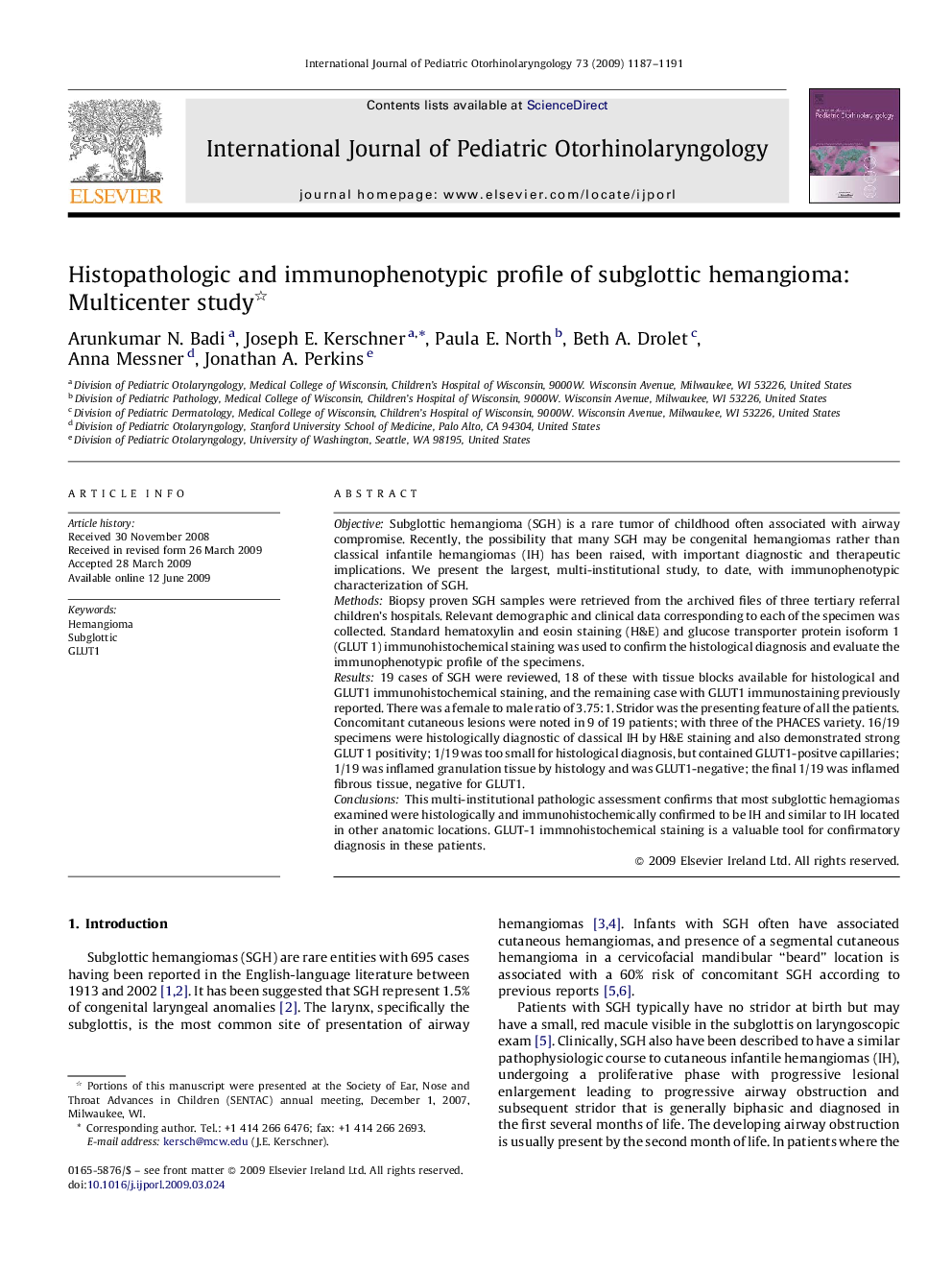| Article ID | Journal | Published Year | Pages | File Type |
|---|---|---|---|---|
| 4114408 | International Journal of Pediatric Otorhinolaryngology | 2009 | 5 Pages |
ObjectiveSubglottic hemangioma (SGH) is a rare tumor of childhood often associated with airway compromise. Recently, the possibility that many SGH may be congenital hemangiomas rather than classical infantile hemangiomas (IH) has been raised, with important diagnostic and therapeutic implications. We present the largest, multi-institutional study, to date, with immunophenotypic characterization of SGH.MethodsBiopsy proven SGH samples were retrieved from the archived files of three tertiary referral children's hospitals. Relevant demographic and clinical data corresponding to each of the specimen was collected. Standard hematoxylin and eosin staining (H&E) and glucose transporter protein isoform 1 (GLUT 1) immunohistochemical staining was used to confirm the histological diagnosis and evaluate the immunophenotypic profile of the specimens.Results19 cases of SGH were reviewed, 18 of these with tissue blocks available for histological and GLUT1 immunohistochemical staining, and the remaining case with GLUT1 immunostaining previously reported. There was a female to male ratio of 3.75:1. Stridor was the presenting feature of all the patients. Concomitant cutaneous lesions were noted in 9 of 19 patients; with three of the PHACES variety. 16/19 specimens were histologically diagnostic of classical IH by H&E staining and also demonstrated strong GLUT 1 positivity; 1/19 was too small for histological diagnosis, but contained GLUT1-positve capillaries; 1/19 was inflamed granulation tissue by histology and was GLUT1-negative; the final 1/19 was inflamed fibrous tissue, negative for GLUT1.ConclusionsThis multi-institutional pathologic assessment confirms that most subglottic hemagiomas examined were histologically and immunohistochemically confirmed to be IH and similar to IH located in other anatomic locations. GLUT-1 immnohistochemical staining is a valuable tool for confirmatory diagnosis in these patients.
